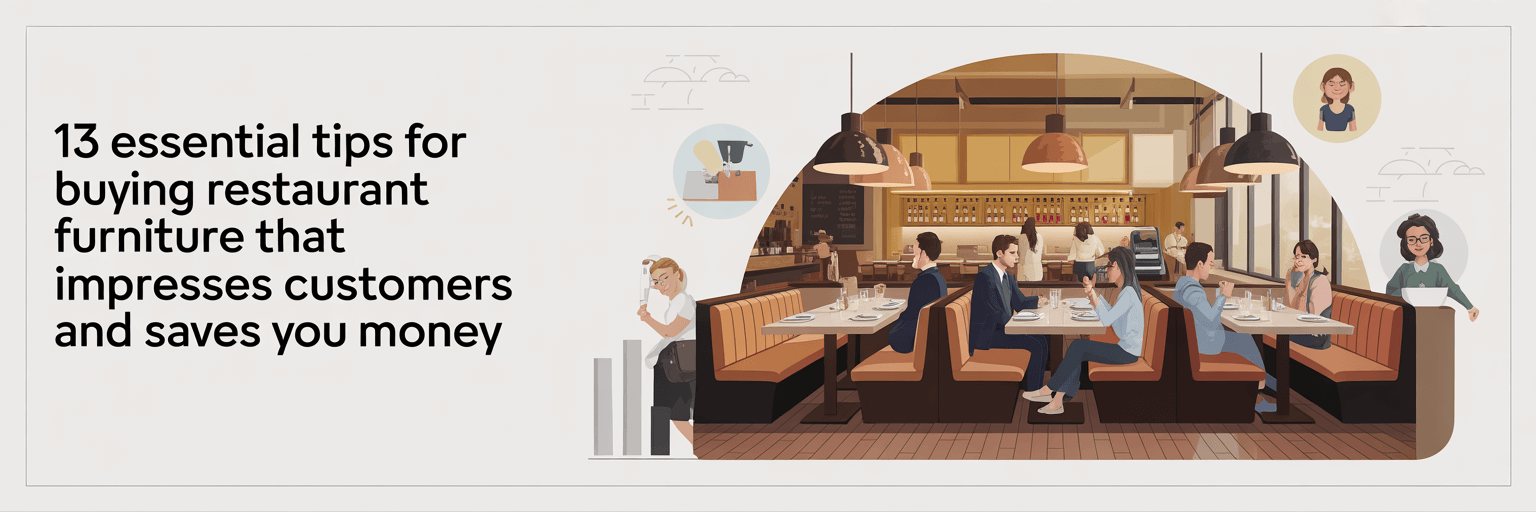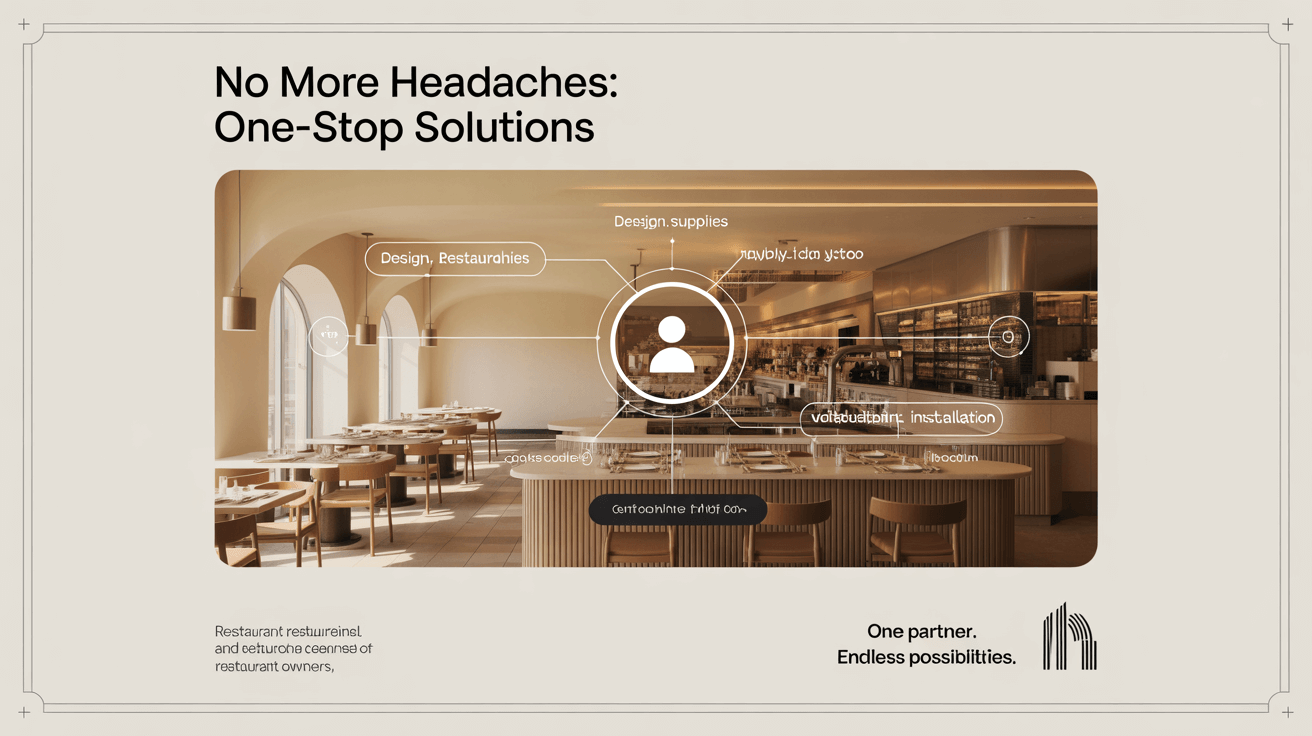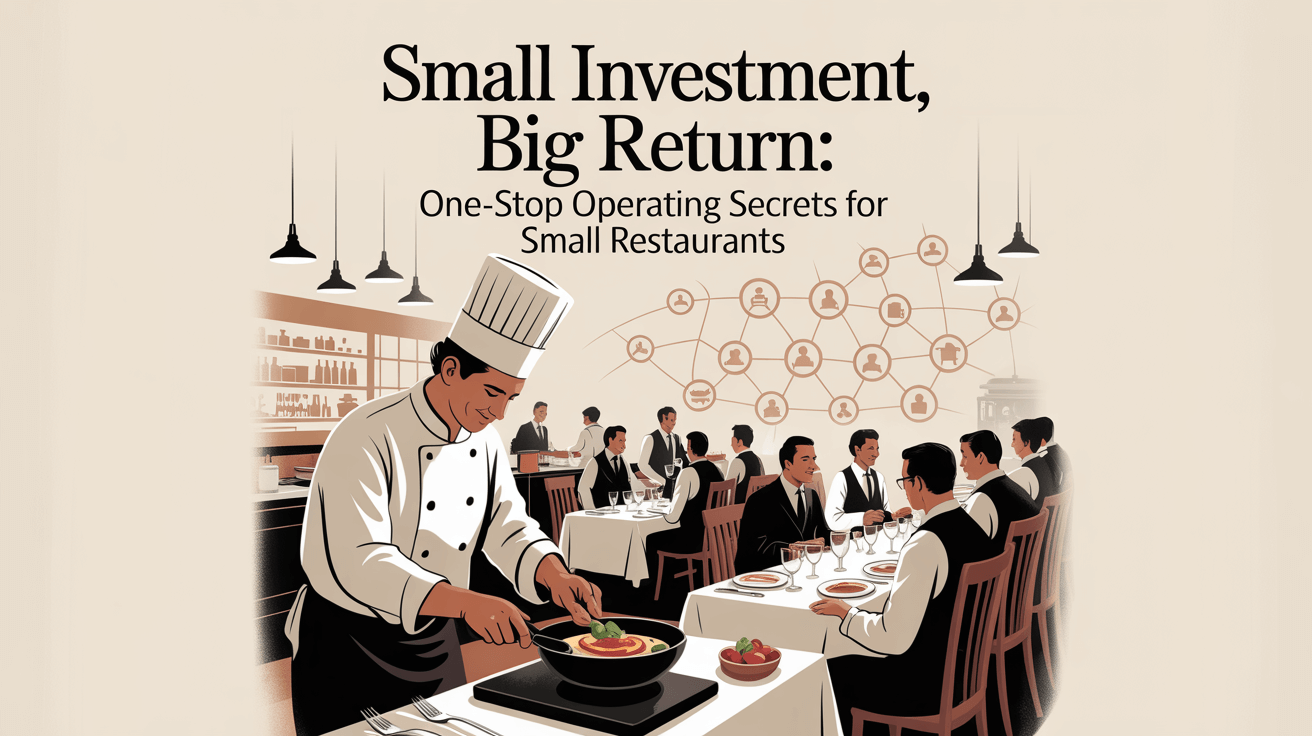13 Essential Tips for Buying Restaurant Furniture That Impresses Customers and Saves You Money guides you through practical steps—from planning to purchase—that elevate décor and cut costs. But here’s the kicker… smart buys delight guests and boost your bottom line.
1. Assess your space and traffic flow
● Measure floor footprint and service paths
● Identify peak-hour bottlenecks
● Plan seating zones and aisle widths
● Map power and lighting locations
Ready for the good part? space clarity prevents costly refits.
| Element | Recommended Value |
|---|---|
| Aisle Width | 36″–48″ |
| Table Zones | 60″ clearance |
2. Define brand style and customer comfort
● Choose color palettes matching your concept
● Balance hard surfaces with cushioned seating
● Select ergonomics-friendly seat heights
● Test sample pieces for tactile appeal
What’s the real story? style coherence boosts perceived value.
3. Set a clear budget per seat
● Calculate desired ROI timeline
● Allocate cost per linear foot of booth
● Factor in tax, shipping, installation
● Reserve 10% contingency for overruns
This is where it gets interesting… budgets keep buys realistic.
4. Source multiple competitive quotes
● Solicit at least three detailed proposals
● Compare unit, freight, and install costs
● Verify customization and warranty terms
● Leverage bulk-order discounts
But here’s the kicker… apples-to-apples quotes reveal true savings.
| Quote Element | Comparison Tip |
|---|---|
| Unit Cost | Material vs. labor split |
| Warranty Coverage | Duration and scope |
5. Vet suppliers for reliability
● Check BIFMA, ISO, or local certifications
● Read peer reviews on industry forums
● Request client references and case studies
● Visit showrooms or ask for video demos
Ready for the good part? a vetted vendor saves headaches.
6. Prioritize commercial-grade durability
● Opt for high-density foam (ILD 30+)
● Choose hardwood or steel frames
● Select abrasion-resistant upholstery
● Verify fire-code compliance (NFPA 701)
What’s the real story? durability reduces replacement spend.
7. Balance customization with cost
● Limit exotic materials to focal pieces
● Use standard sizes where possible
● Negotiate minimal alteration fees
● Phase custom runs across seasons
This is where it gets interesting… selective custom keeps budgets in check.
| Custom Option | Cost Impact |
|---|---|
| Exotic Veneers | +20–30% |
| Custom Upholstery | +10–15% |
8. Factor in delivery and installation
● Choose white-glove for zero damage risk
● Confirm site access and clearances
● Coordinate timing with contractors
● Budget 10–15% of furniture cost for install
But here’s the kicker… smooth install ensures on-time openings.
9. Negotiate payment and financing
● Ask for net-30 or net-60 terms
● Explore rent-to-own options
● Leverage early-payment discounts
● Consider equipment loans or leases
Ready for the good part? flexible terms ease cash flow.
10. Inspect and test upon arrival
● Check for shipping damage or defects
● Test chair stability and table level
● Verify correct quantities and models
● Document issues and claim replacements fast
This is where it gets interesting… quick QA triggers fixes.
| Inspection Step | Action Required |
|---|---|
| Damage Check | Visual inspection |
| Function Test | Load and stability check |
11. Train staff on care and maintenance
● Share cleaning protocols for each material
● Schedule quarterly hardware checks
● Log wear patterns and report damage
● Keep spare parts on site
What’s the real story? trained staff extend furniture life.
12. Plan for phased upgrades
● Rotate sections by wear level
● Mix new pieces with existing stock
● Budget refresh cycles every 3–5 years
● Leverage end-of-life trade-in credits
But here’s the kicker… phased refresh spreads cost.
13. Track ROI and adjust strategy
● Measure cost per seat over time
● Compare maintenance vs. replacement spend
● Survey guest feedback on comfort and style
● Adjust future specs based on data
Ready for the good part? ROI insights sharpen buys.
14. Leverage bulk and repeat ordering
● Secure volume discounts on recurring orders
● Lock in flat pricing for 12 months
● Automate reorders via B2B portals
● Earn preferred-vendor status perks
This is where it gets interesting… bulk buys slash unit costs.
15. Stay updated on market trends
● Attend trade shows and expos yearly
● Subscribe to hospitality design journals
● Network in owner/operator groups
● Review new sustainable materials
What’s the real story? trend awareness keeps your space fresh.
Conclusion
Following these 13 essential tips—spanning planning, sourcing, negotiation, and ROI tracking—ensures restaurant furniture that wows customers and safeguards your budget. Apply this roadmap to make informed, stylish, and cost-effective purchases.
FAQ
Q1: How much should I budget per seat?
Allocate $300–$600 per seat, including install and freight.
Q2: What warranty terms are ideal?
Aim for 3–5 years on frames and 1–2 years on upholstery.
Q3: Are rent-to-own options advisable?
Yes—rent-to-own spreads cost and preserves working capital.
Q4: How often replace high-traffic furniture?
Plan refresh cycles every 3–5 years, depending on wear.
Q5: Can bulk orders secure extra discounts?
Absolutely—volume commitments often unlock 10–20% savings.






